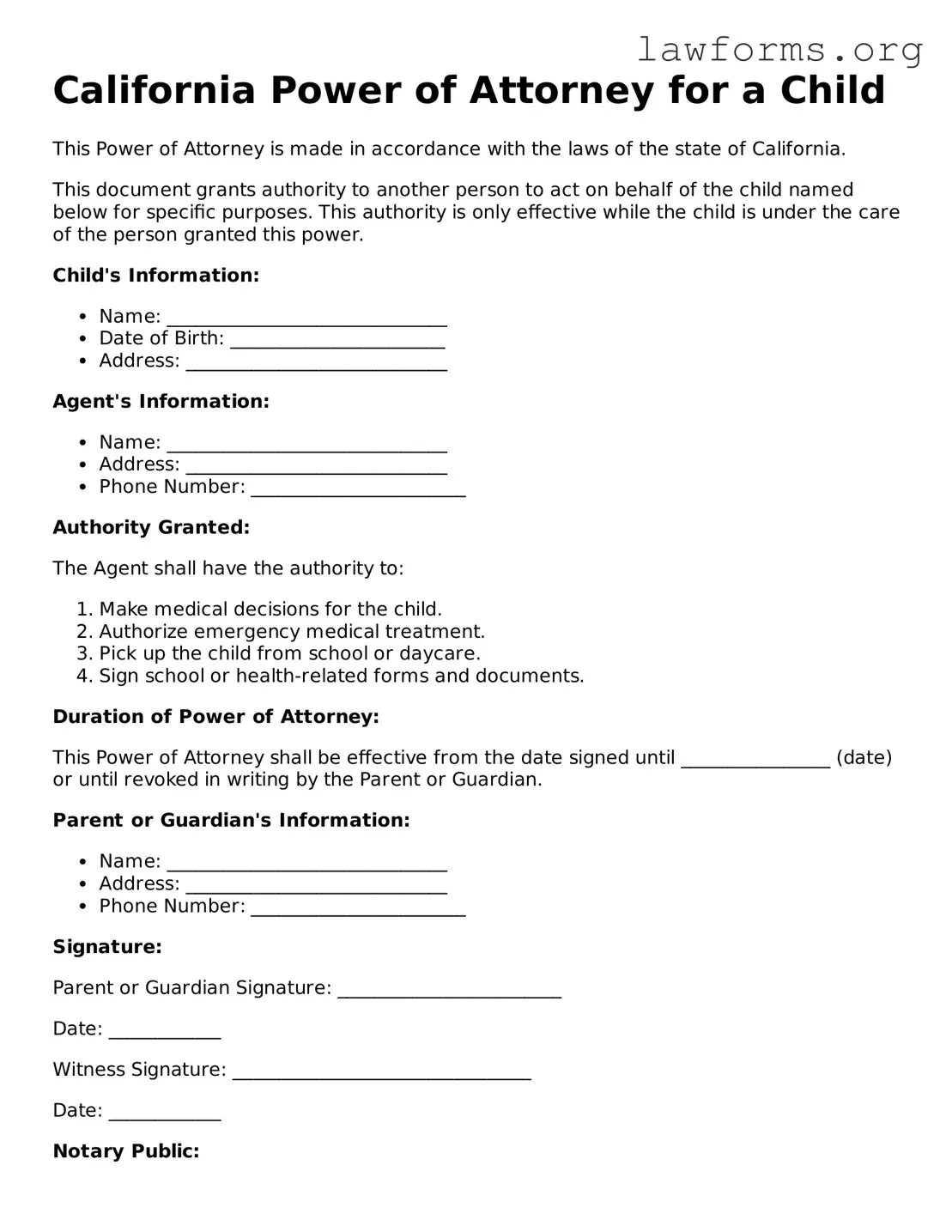California Power of Attorney for a Child
This Power of Attorney is made in accordance with the laws of the state of California.
This document grants authority to another person to act on behalf of the child named below for specific purposes. This authority is only effective while the child is under the care of the person granted this power.
Child's Information:
- Name: ______________________________
- Date of Birth: _______________________
- Address: ____________________________
Agent's Information:
- Name: ______________________________
- Address: ____________________________
- Phone Number: _______________________
Authority Granted:
The Agent shall have the authority to:
- Make medical decisions for the child.
- Authorize emergency medical treatment.
- Pick up the child from school or daycare.
- Sign school or health-related forms and documents.
Duration of Power of Attorney:
This Power of Attorney shall be effective from the date signed until ________________ (date) or until revoked in writing by the Parent or Guardian.
Parent or Guardian's Information:
- Name: ______________________________
- Address: ____________________________
- Phone Number: _______________________
Signature:
Parent or Guardian Signature: ________________________
Date: ____________
Witness Signature: ________________________________
Date: ____________
Notary Public:
State of California
County of _______________
Subscribed and sworn to before me this __________ day of __________, 20____.
Notary Public Signature: __________________________
My Commission Expires: _________________________
